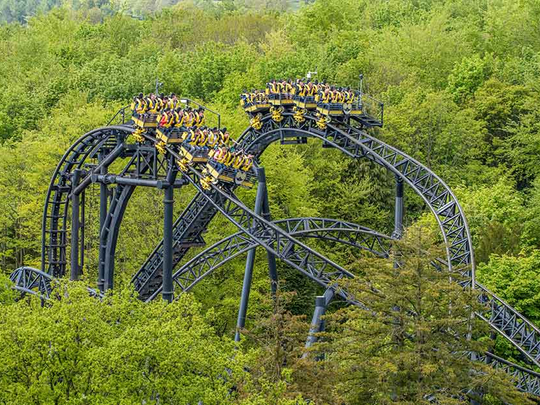
It was a ride that went horribly wrong.
On October 25, at the Dreamworld theme park in Australia, four people died when a 30-year-old water raft ride malfunctioned and flipped over. Elsewhere, on June 14, the happiest place on earth — Walt Disney World in Florida in the US — was the scene of a tragedy, as a two-year-old boy playing on a beach was dragged off into a lagoon by an alligator. The boy drowned, and his body was recovered the next day.
Surprisingly, though there were ample "No Swimming" boards in the area, there were none about alligators. The management reacted swiftly by closing off the beach, adding nettings and rope fences and, yes, new warning signs. Jacquee Wahler, vice president of Walt Disney World Resort, released a statement saying they were conducting a "swift and thorough" review of all of processes and protocols.
The incident also turns the spotlight on how safe theme parks are — especially the huge, open ones offering everything from boat rides to crazy rollercoaster rides. Have they thought through everything that could possibly go wrong, even outlier events that have a million in one chance of ever happening? For example, ABC Eyewitness News notes that as per the wildlife commission statistics, the likelihood of an unprovoked alligator attack in Florida is roughly one in 2.4 million.
A May 29 report by NY Daily News observes the US alone has over 400 amusement parks, reporting more than 1,000 injuries every year. And though amusement park deaths are rare, major cases often end in confidential settlements, "keeping the dirty details unknown". The publication further accuses the industry of having "largely failed to be transparent about its potential problems — even while touting its own safety record".
Major accidents that have marred the industry's safety record include the June 2015 Alton Towers rollercoaster crash in the UK, that left four people seriously injured, and a few passengers trapped 25 feet in the air for over four hours. And in 2010, a rocket simulator ride at Eco-Adventure Valley Space Journey in Shenzhen, China, came crashing down, claiming the lives of six. Though the worst tragedy on record unravelled in 1984 at the Haunted Castle in the Six Flags Great adventure park in New Jersey, USA — the structure caught fire, leaving eight people dead.
Closer home, Stanford Pinto, Chief Parks Operating Officer, DXB Entertainments reassures that safety is of paramount importance at Dubai Parks and Resorts. “Throughout our design, manufacturing, installation and commissioning phases we have worked closely with Dubai Municipality and TUV SUD to ensure every ride system is rigorously tested according to the highest international industry standards. Safety certifications from TUV SUD are obtained before the attractions are opened to visitors and on an annual basis thereafter,” he says, adding that all children’s play areas have also been tested and certified by Darlsco.
The industry trade group IAAPA (International Association of Amusement Parks and Attractions) also asserts safety is the number one priority of the attractions industry, and amusement parks provide "one of the safest forms of recreation available to the public".
And it has the data to back its claims.
A 2014 survey reveals approximately 335 million visitors took 1.6 billion rides at 400 US amusement parks, and the chance of being seriously injured was 1 in 16 million. In contrast, IAAPA observes the number of injuries per million while playing football is 704, and 85 while fishing. Apparently, even golf (53 injuries per million) and billiards (8 per million) are more dangerous. And yes, while in the US, you are more likely to be struck by lightning than meet with an accident while on an amusement park ride.
Unfortunately, there is no data on the probability of getting struck by lighting while you are zipping around a roller coaster loop.








